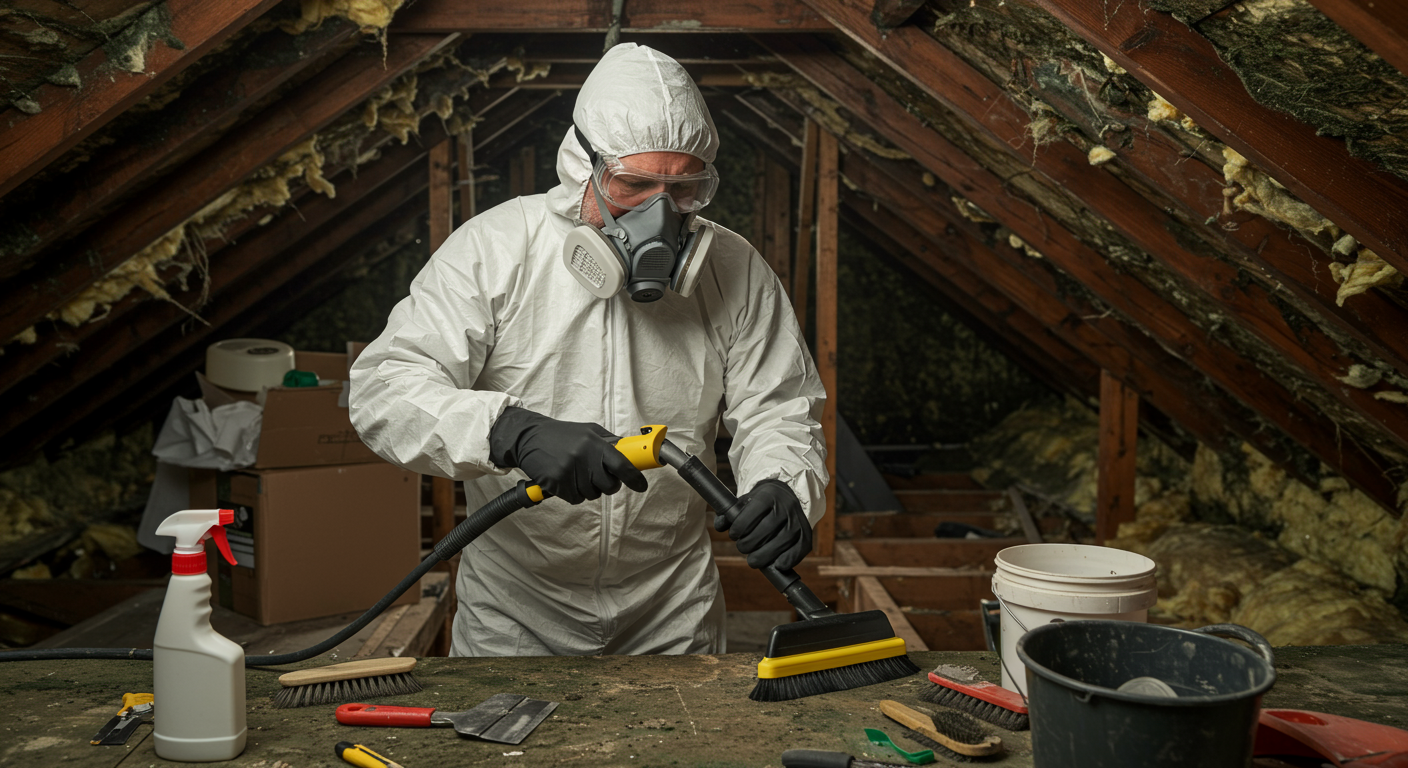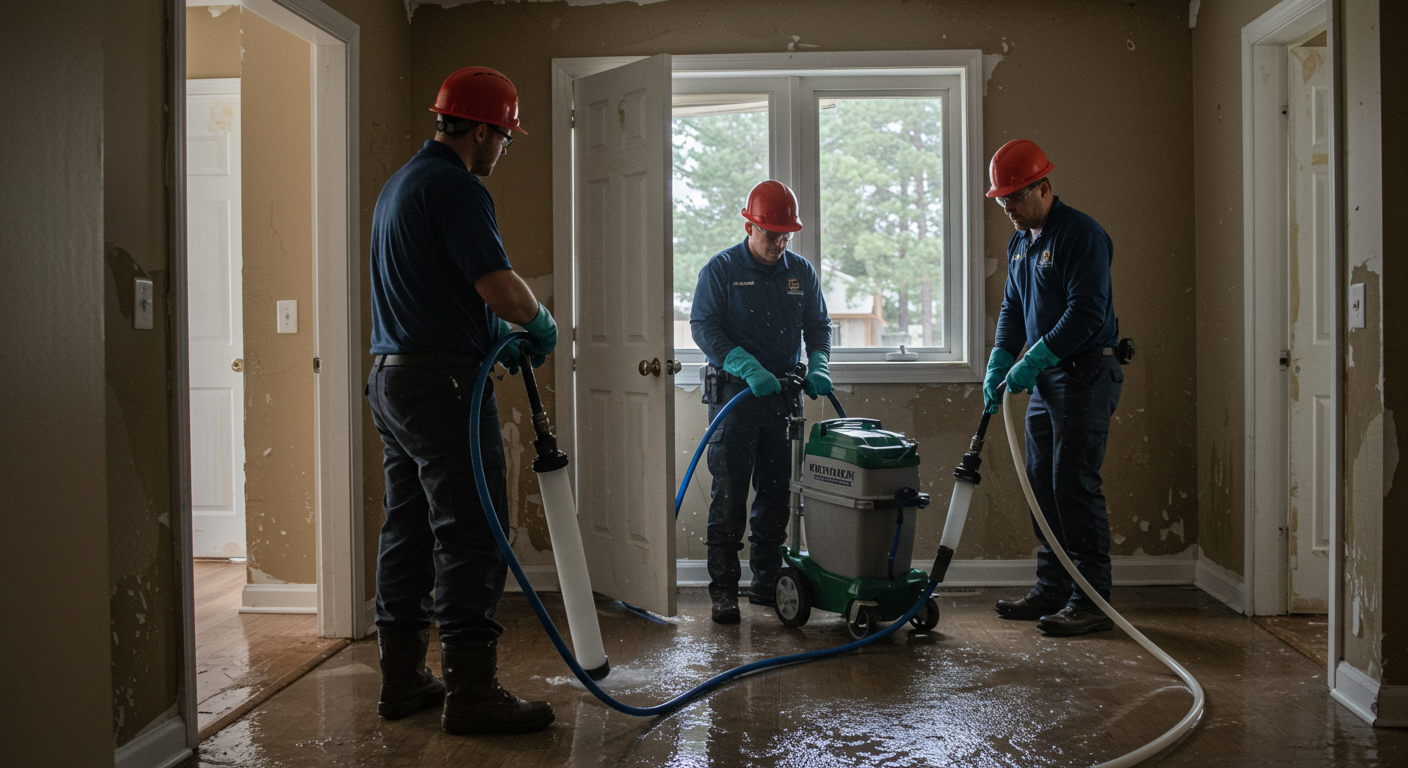Mold in your attic can be a silent invader, causing structural damage to your home and posing serious health risks to your family. For residents of Caldwell, ID, understanding how mold develops, identifying its presence, and taking steps to remove and prevent it is crucial. This guide will walk you through everything you need to know about mold in your attic, from its causes to effective remediation and prevention strategies.
Understanding Mold Growth in Attics
What is Mold and Why Does it Grow?
Mold is a type of fungus that thrives in damp, warm, and poorly ventilated environments. Attics often provide the perfect conditions for mold growth due to high humidity levels, temperature fluctuations, and limited airflow. When moisture from roof leaks or condensation accumulates, it creates an ideal breeding ground for mold spores to multiply.
The presence of organic materials, such as wooden beams and insulation, further encourages mold growth. Without proper intervention, mold can spread rapidly, compromising the structural integrity of your attic and impacting indoor air quality.
Health Risks Associated with Mold Exposure
Exposure to mold can lead to a variety of health issues, particularly for individuals with pre-existing respiratory conditions, allergies, or weakened immune systems. Symptoms may include coughing, sneezing, nasal congestion, and skin irritation. Prolonged exposure can exacerbate asthma and other chronic respiratory problems.
Children, the elderly, and individuals with compromised immune systems are especially vulnerable to the effects of mold. Addressing mold growth promptly is essential to protect your family’s health and well-being.
Identifying Mold in Your Attic
Signs of Mold Presence
Detecting mold in its early stages can save you time, money, and potential health complications. Common signs of mold in the attic include:
- Discoloration on walls, ceilings, or wooden beams.
- A persistent musty odor.
- Peeling paint or wallpaper.
- Visible mold patches, which can appear black, green, or white.
Regular inspections of your attic can help you identify these signs before the problem escalates.
Common Causes of Mold in Attics
Several factors contribute to mold growth in attics, including:
- Water Damage: Roof leaks and condensation are primary culprits. Water seeping through damaged shingles or flashing can create moist conditions ideal for mold.
- Poor Ventilation: Inadequate airflow traps moisture, creating a humid environment.
- Insufficient Insulation: Poor insulation can lead to temperature imbalances, causing condensation to form on surfaces.
Addressing these underlying causes is key to preventing mold from taking hold in your attic.
Mold Remediation Process
Steps for Safe Mold Removal
Removing mold from your attic requires a systematic approach to ensure safety and effectiveness. Here’s a step-by-step guide:
- Initial Assessment: Conduct a thorough inspection to determine the extent of the mold infestation. Hiring a professional mold remediation service is recommended for accurate assessment and safe removal.
- Containment: Seal off the affected area to prevent mold spores from spreading to other parts of your home.
- Cleaning and Disinfecting: Use specialized cleaning agents to remove mold from surfaces. Protective gear, such as gloves and masks, is essential during this process.
- Drying the Area: Eliminate moisture by using dehumidifiers and improving ventilation.
- Repairs: Address any structural damage caused by mold and fix the underlying issues, such as leaks or poor insulation.
Preventive Measures to Avoid Future Mold Growth
Prevention is the best defense against mold. Implement these measures to keep your attic mold-free:
- Improve Ventilation: Install vents or fans to enhance airflow and reduce humidity.
- Upgrade Insulation: Proper insulation minimizes temperature fluctuations and prevents condensation.
- Regular Maintenance: Inspect your attic periodically for leaks, moisture, and signs of mold.
By taking these steps, you can safeguard your home from future mold infestations.

Choosing the Right Mold Remediation Service in Caldwell
What to Look for in a Mold Remediation Company
Selecting a reliable mold remediation service is crucial for effective removal and prevention. Here are some factors to consider:
- Certifications and Experience: Look for companies with certified mold remediation specialists and a proven track record.
- Advanced Technology: Ensure the company uses modern tools, such as moisture meters and thermal cameras, for accurate detection and removal.
- Customer Reviews: Check online reviews and testimonials to gauge the quality of service.
Local Mold Remediation Services
Caldwell, ID, is home to several reputable mold remediation companies, including BUK Restoration and Red Truck Disaster Response. These professionals offer comprehensive services, from inspection to remediation and prevention. Prompt action is essential to mitigate damage and protect your home.
For additional resources on water damage and mold prevention, explore Expert Water Remediation Services in Nampa, ID and Top Solutions for Effectively Killing Mold in Boise City, ID.
Conclusion
Mold in your attic is more than just an unsightly nuisance—it’s a serious issue that can affect your home’s structure and your family’s health. By understanding the causes of mold growth, identifying its presence, and taking proactive steps to remove and prevent it, you can maintain a safe and healthy living environment.
If you suspect mold in your attic, don’t wait. Contact a professional mold remediation service in Caldwell, ID, to address the problem promptly and effectively. With the right approach, you can protect your home and ensure peace of mind for years to come.


